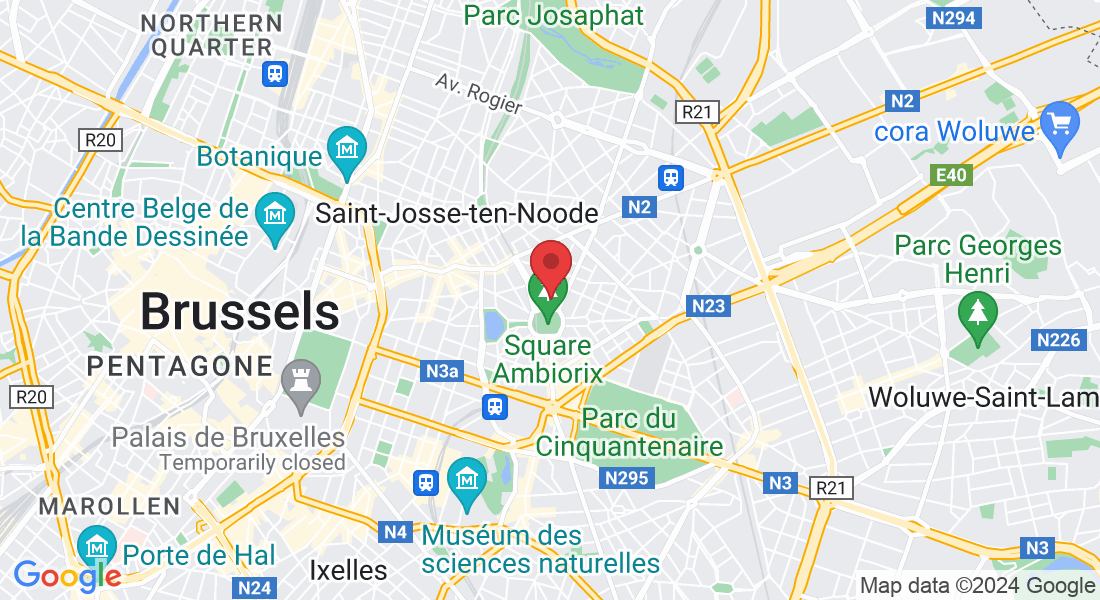Innovative Actions Network for the Information Society
IANIS is coordinated by ERISA The European Regional Information Society Association.

What we believe in - historical foundations
Innovation in an Information Society
Our history is grounded in solid foundations. Our best known guide - Indicators & Benchmarking. This “Guide to Regional Good Practice” is one of six such guides prepared in the frame of the IANIS+ work programme (2005-07) that has been co-financed by the European Commission, DG Regional and Global Policy. IANIS+ has been an information society network programme under the Innovative Actions of the Structural Funds and is a follow-up to a predecessor programme, IANIS (2002-04). IANIS produced ten guides to good practice which were generally well received – and these are still available for download in PDF format from the Competence Centre at the eRegion Hub (www.ianis.net). In preparing and negotiating the work programme for IANIS+, it seemed therefore sensible to plan for a number of further guides to regional good practice
What We Do

Validating Current Trends in Information Technologies
Through our Global Innovation and Design Lab, our work is intended for policymakers and professionals in various sectors of the Information Society and Innovation, specifically those who integrate Information and Communication Technology (ICT) statistics into their routine tasks.
It is not aimed at statisticians, who are presumed to have a firm grasp of the presented issues. Instead, the focus is on aiding those who utilize ICT statistics in the development, implementation, and assessment of policy initiatives at the regional level.
The Working Group on Indicators and Benchmarking, comprising experts from different member regions, addresses issues identified by other Working Groups and Labs, such as our Urban Innovation Lab and our Global Innovation and Design Lab, concerning the evaluation of regional authorities' efforts towards achieving the global and EU Strategy goals. While European Union and National authorities employ diverse data sets and statistics to assess Member States' progress in the Knowledge Economy, there is a notable gap in acknowledging or emphasizing regional and local initiatives that significantly contribute to Europe's collective objectives. Consequently, the outstanding regional accomplishments often remain obscured by national statistics, despite their comparable or greater importance.
Recognizing the pivotal role of regional initiatives in ICT is crucial under the new cohesion policy framework. The digital divide in Europe, defies traditional North/South or West/East divisions. This divide exists within regions and states, including those with high rankings. Often, the most innovative practices emerge from countries lower in statistical rankings.
The primary goal of this Working Group is to establish and promulgate a method for evaluating these regional projects, either individually or within a regional strategy framework. This assessment tool is designed to aid policymakers and experts in devising projects, actions, and strategies that are straightforward to benchmark in the upcoming year. The allocation of cohesion aids and access to RDT funds will be influenced by these benchmarking exercises.
The updated mission of the Urban Innovation Lab Working Group is to explore the impact of Artificial Intelligence (AI) on digital public policy. This involves studying AI's role in shaping policy decisions, its influence on digital divides, and its potential to innovate in both national and regional strategies. The Group aims to integrate AI considerations into the assessment of ICT initiatives, ensuring that policy decisions are informed by the latest technological advancements and trends in AI. By doing so, the Group will contribute to more effective, inclusive, and forward-thinking digital public policies.
Programs and Projects
This project, previously focused on developing benchmarks for the Information Society and Knowledge-Based Economy, now pivots to explore the intersection of Artificial Intelligence (AI) and digital public policy. The initial framework was based on established models such as the OECD Working Party on Indicators of the Information Society Model for eCommerce indicators, and the U.K. Office for National Statistics' (ONS) approach to information society statistics.

In modernizing this statement, the new mission will incorporate a comprehensive study of AI's influence on digital policy formulation and execution. The focus shifts to:
AI Integration in Policy Making: Evaluating how AI technologies can be leveraged in policy analysis, decision-making processes, and implementation strategies. This includes studying AI's role in enhancing efficiency, accuracy, and innovation in policy development.
Benchmarking AI Advancements: Developing new indicators and benchmarks specific to AI's impact on the digital economy and public sector. This involves identifying key metrics to track AI development, deployment, and its societal effects.
Ethical and Regulatory Frameworks: Understanding the ethical implications of AI in public policy and developing guidelines to ensure responsible AI use. This includes addressing concerns related to privacy, bias, transparency, and accountability in AI systems.
Regional and Global AI Trends: Investigating how AI technologies differ across regions and their impact on the digital divide. This includes assessing AI's role in bridging gaps in technology access and usage, and its influence on global digital policy frameworks.
Public-Private Partnerships in AI: Examining the role of public-private collaborations in advancing AI for public good, including how governments can effectively partner with tech companies, academia, and NGOs.
Case Studies and Best Practices: Analyzing successful AI implementations in various policy areas to provide a roadmap for effective AI integration in public policy.
Future-Oriented Policy Making: Preparing for future AI developments and their potential impact on society, including proactive policy measures to harness the benefits of AI while mitigating risks.
This renewed focus on AI in digital public policy recognizes the transformative power of AI technologies. It aims to ensure that policies not only keep pace with technological advancements but also harness these advancements for societal benefit, maintaining a balance between innovation and ethical considerations.
Sister Networks
ERIK ACTION is a Capitalisation project approved on the first INTERREG IVC call for proposals.
The project has also the direct support of the European Commission as a Fast Track initiative.
ERIK ACTION aims to improve the effectiveness of regional development policies in the field of innovation and the knowledge economy and, specifically, in upgrading the innovation capacity of existing enterprises.
Our Principles
"I often say that when you can measure what you are speaking about, and express it in numbers, you know something about it; but when you cannot measure it, when you cannot express it in numbers, your knowledge is of a meagre and unsatisfactory kind."(Lord Kelvin)
"First, we must insist on risk calculation being expressed as distributions of estimates, and not as magic numbers that can be manipulated without regard to what they really mean. We must try to display more realistic estimates of risk to show a range of probabilities. To help do this we need tools for quantifying and ordering sources of uncertainty and for putting them in perspective." (W.D. Ruckelshaus)

Our Team

Our coaches are all highly qualified and experienced. They have all completed accredited training programs in career coaching, and they have a proven track record of success.
We are committed to providing our clients with the best possible service. We are always learning and growing, and we are constantly looking for new ways to help our clients achieve their goals.
FAQS
What is Design Thinking?
Design thinking is an innovative and imaginative approach focused on enhancing human experiences. It's a popular methodology applied globally in various sectors, including industry, non-profits, government, and academia. This approach encourages asking insightful questions, rethinking challenges, and fostering swift and adaptable solution-finding. It emphasizes teamwork, broadening perspectives, and embracing new possibilities. Integral to design thinking are learning from failures, comfortably navigating uncertainty, and working collaboratively.
What does the Global Innovation and Design Lab do?
At our Global Innovation and Design Lab, we harness the power of design thinking's iterative cycle of ideation, prototyping, and testing. This process enables us to address and solve complex challenges across various sectors and geographical areas, driving innovation and bolstering global public policy initiatives. Our team is diverse, consisting of skilled design practitioners, faculty, staff, and students, all motivated by the principles of design thinking. These principles guide us to formulate insightful questions, reshape how we view problems, accelerate the solution-finding process, strengthen collaboration, and uncover new possibilities. Our Lab's approach integrates a global perspective, utilizing case studies and planet-centered designs from across the globe to inspire and inform local innovations. We engage in projects that meet several key criteria:
1. Inclusive Innovation: Each project aligns with our mission to foster inclusive innovation, ensuring broad, beneficial impacts.
Partner-Driven Prioritization: Projects are selected in partnership with other organizations, identified as a high priority. We involve a minimum of three core representatives from the partnering organization in the early stages to clearly establish the project’s purpose, needs, and timeline.
Commitment to Design Phases: Participants in our projects are dedicated to engaging in every phase of the design process. This commitment is crucial for developing workable and scalable prototypes, applicable to both service and product design.
Interdisciplinary Participation: We prioritize projects that are interdisciplinary, offering opportunities for faculty and student involvement, thereby enriching the educational experience and fostering a collaborative learning environment.
Through these practices, the Global Innovation and Design Lab aims to be a crucible of creative problem-solving, advancing practical solutions and fostering a culture of innovation that resonates globally.



